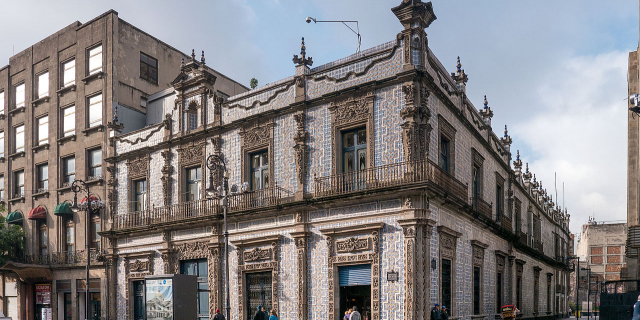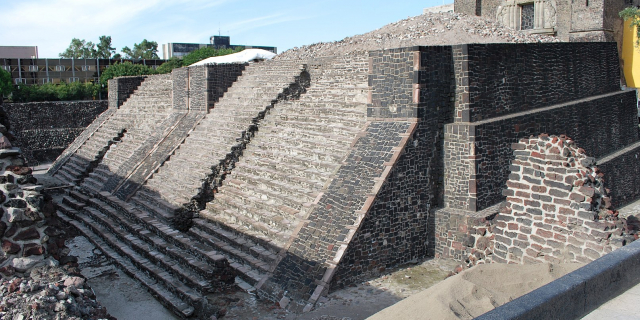Reserva de la Biosfera de la Mariposa Monarca
( Monarch Butterfly Biosphere Reserve )The Monarch Butterfly Biosphere Reserve (Spanish: Reserva de Biosfera de la Mariposa Monarca) is a World Heritage Site containing most of the overwintering sites of the eastern population of the monarch butterfly. The reserve is located in the Trans-Mexican Volcanic Belt pine-oak forests ecoregion on the border of Michoacán and State of Mexico, 100 km (62 miles), northwest of Mexico City. Millions of butterflies arrive in the reserve annually. Butterflies only inhabit a fraction of the 56,000 hectares of the reserve from October–March. The biosphere's mission is to protect the butterfly species and its habitat.
Most of the overwintering monarchs from eastern North America are found here. Researchers discovered these areas in 1975. Presidential decrees in the 1980s and 2000 designated these still privately held areas as a federal reserve. The Reserve was declared a Biosphere Reserve in 1980 and a World Heritage Site in 2008. The reserve remains predom...Read more
The Monarch Butterfly Biosphere Reserve (Spanish: Reserva de Biosfera de la Mariposa Monarca) is a World Heritage Site containing most of the overwintering sites of the eastern population of the monarch butterfly. The reserve is located in the Trans-Mexican Volcanic Belt pine-oak forests ecoregion on the border of Michoacán and State of Mexico, 100 km (62 miles), northwest of Mexico City. Millions of butterflies arrive in the reserve annually. Butterflies only inhabit a fraction of the 56,000 hectares of the reserve from October–March. The biosphere's mission is to protect the butterfly species and its habitat.
Most of the overwintering monarchs from eastern North America are found here. Researchers discovered these areas in 1975. Presidential decrees in the 1980s and 2000 designated these still privately held areas as a federal reserve. The Reserve was declared a Biosphere Reserve in 1980 and a World Heritage Site in 2008. The reserve remains predominantly rural. Reserve administrators continue to be concerned with deleterious effects of illegal logging and tourism. Conservation efforts sometimes conflict with the interests of local farmers, community-based landowners, private land owners and indigenous people.
The region that comprises the reserve was over-logged during the colonial period of the 19th century. The post-Mexican Revolution saw an increase in restitution for these actions in the form of land grants among the Indigenous populations.[1] The region has remained mostly rural, noted for communities of Otomi and Mazahua.[2] These communities have "traditionally preserved upper mountain ranges as communal lands for... collective use, including sustainable forest exploitation, while the lower hills were divided into family plots where households grew crops in traditional food gardens" (see below: Conservation).[1]
Initial protection for the monarch butterfly overwintering areas was decreed in 1980 by President José López Portillo[2] after decades of extensive research on the migratory patterns of the monarch butterfly.[1] In the late 1980s reserve management was delegated to the Secretariat of Urban Development and Ecology. In 1986, poet and founder of the Group of 100 Homero Aridjis convinced President Miguel de la Madrid to give the overwintering sites special protection, and the resulting presidential decree, published October 9, 1986, designated Sierra Chincua, Sierra El Campanario, Cerro Chivatí-Huacal, Cerro Pelón and Cerro Altamirano as protected areas for the migration, hibernation and reproduction of the monarch butterfly as part of the Monarch Butterfly Special Biosphere Reserve covering 16,110 hectares [39,809 acres]. A "total and permanent ban on logging and use of the vegetation and wildlife" was decreed in the core zones, 4,491 hectares [11,000 acres]. The buffer zones, 11,620 hectares [28,714 acres] were to "protect the core zone from outside impact, and productive economic activities were allowed, within environmental norms." In September 2000, the Monarch Butterfly Biosphere Reserve was enlarged to cover 56,259 hectares [217 square miles], with core zones of 13,552 hectares [52 square miles] and buffer zones of 42,707 hectares [165 square miles]. In 2008, when Homero Aridjis was Mexico's ambassador to UNESCO, he convinced the World Heritage Committee's 21 members to unanimously agree to list the Monarch Butterfly Biosphere Reserve as a World Heritage Site, in the category of natural sites. In February, 2014, the Group of 100 and Make Way For Monarchs addressed a letter to President Enrique Peña Nieto, President Barack Obama and Prime Minister Stephen Harper asking them to discuss the future of the monarch butterfly at the North American leaders' Summit to be held in Toluca, state of Mexico on February 19–20. The letter said, "Plummeting from a high of 1.1 billion monarch butterflies overwintering in central Mexico´s high-altitude oyamel fir forests in 1996 to a pitiful 33 million thinly scattered over seven sites during the current 2013–2014 season, the extraordinary monarch butterfly migratory phenomenon is now officially endangered. In past years the decline in butterfly numbers was blamed on logging in Mexico's Monarch Butterfly Biosphere Reserve, out-of-control ecotourism and devastating climate events such as the 2002 winter storms in the state of Michoacan and the severe 2011 drought in Texas.[citation needed] But now monarch butterfly experts are in agreement that the main cause of the dizzying drop in monarch numbers is the huge increase in land planted with genetically modified, herbicide resistant soybean and corn crops (93% of total soybean acreage and 85% of corn acreage in 2013) in the U.S. Corn Belt. Relentless spraying of herbicides on the fields has destroyed the once abundant milkweed plants, the only plants that monarch caterpillars can eat. The monarch butterfly is literally being starved to death.[citation needed] Sharing the blame is continued degradation of the monarchs' overwintering habitat in Mexico, where small-scale illegal logging is still rampant."[citation needed] The joint statement released by the three leaders at the end of the meeting stated that "We will continue to collaborate in the protection of our region's biodiversity and to address other environmental challenges, such as wildlife trafficking and ecosystems at risk. Our governments will establish a working group to ensure the conservation of the Monarch butterfly, a species that symbolizes our association." In June 2014, Obama established a Pollinator Health Task Force, one of whose stated goals is to "increase the Eastern population of the monarch butterfly to 225 million butterflies occupying an area of 6 hectares in the overwintering grounds in Mexico, through domestic/international actions and public/private partnerships, by 2020."[citation needed] In June 2016, more than 200 scientists, writers and artists signed a letter written by Homero Aridjis, Lincoln Brower and Ernest Williams and addressed to Mexican President Enrique Peña Nieto, U.S. President Barack Obama and Canadian Prime Minister Justin Trudeau in advance of the North American Leaders' Summit in Ottawa later that month, urging the three countries to work together to mitigate the loss of the butterflies' breeding habitat and to terminate all logging in the Monarch Butterfly Biosphere Reserve in Michoacán and the State of Mexico.[citation needed] In 2020, there were nine monarch colonies in Mexico, occupying 2.10 hectares. As scientists estimate there could be as many as 50 million monarchs in a hectare, the 2020 population only reached 105 million.[citation needed]
Another notable piece of context regarding the MBBR is the disappearance of Homero Gómez González in January 2020, who was an important figure in the conservation of the butterfly. Gonzalez-Duarte points out that a disappearance creates fear and terror amongst the community by preventing mourning. Media coverage of this event followed the narrative that loggers were to blame for the disappearance of the environmentalist. Gonzlez-Duarte challenges this narrative and attributes the disappearance to growing violence and an increased presence of organized crime.[1]






























Add new comment